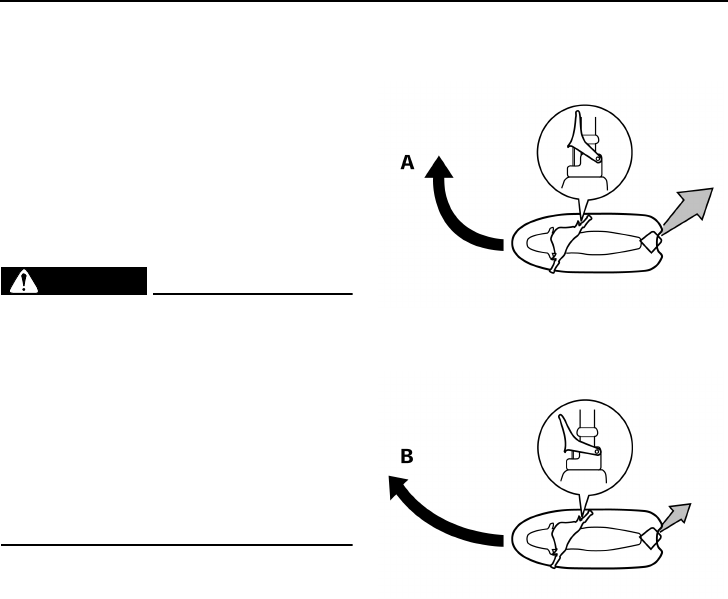
Operation
67
page 91 or “Submerged watercraft” on
page 91.) NOTICE: Do not operate the
engine at full throttle for at least 1
minute after the engine has been re-
started. Excessive water in the engine
compartment can splash into the en-
gine, which can result in severe dam-
age.
[ECJ00551]
EJU36051
Turning the watercraft
WARNING
EWJ01100
● Do not release the throttle lever when
trying to steer away from objects—you
need throttle to steer. A collision could
result in severe injury or death.
● When operating at higher speeds, make
gradual turns or slow down before turn-
ing. Sharp high-speed turns may cause
the watercraft to slide sideways or spin,
throwing the operator and passenger
overboard, which could cause an injury.
Steering control depends on the combination
of handlebar position and the amount of throt-
tle.
Water sucked in through the intake grate is
pressurized by the impeller in the jet pump. As
the pressurized water is expelled from the
pump through the jet thrust nozzle, it creates
thrust to move and steer the watercraft. The
higher the engine speed, the more thrust pro-
duced.
The amount of jet thrust, in addition to the po-
sition of the handlebars, determines how
sharply you turn.
A. More throttle produces higher thrust, so
the watercraft will turn more sharply.
B. Less throttle produces lower thrust, so
the watercraft will turn more gradually.
C. Releasing the throttle lever completely
produces only minimum thrust. If you are
traveling at speeds above trolling, you will
have rapidly decreasing ability to steer
without throttle. You may still have some
turning ability immediately after releasing
the throttle lever, but once the engine
slows down, the watercraft will no longer
respond to handlebar input until you ap-
ply throttle again or you reach trolling
speed.
At trolling speed, the watercraft can be
turned gradually by handlebar position
UF2R10E0.book Page 67 Friday, October 31, 2008 9:14 AM


















